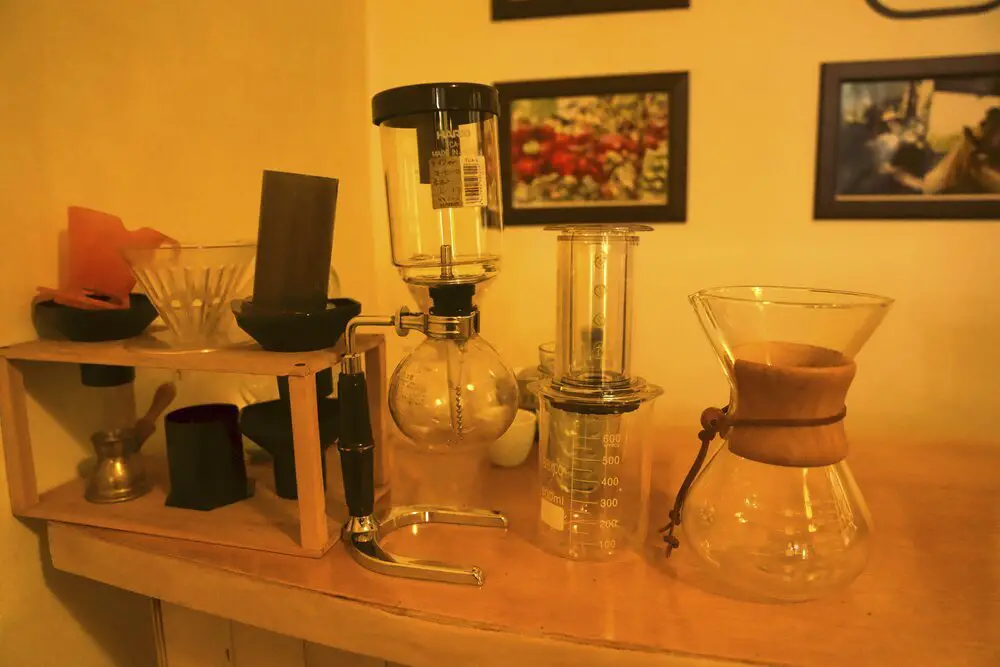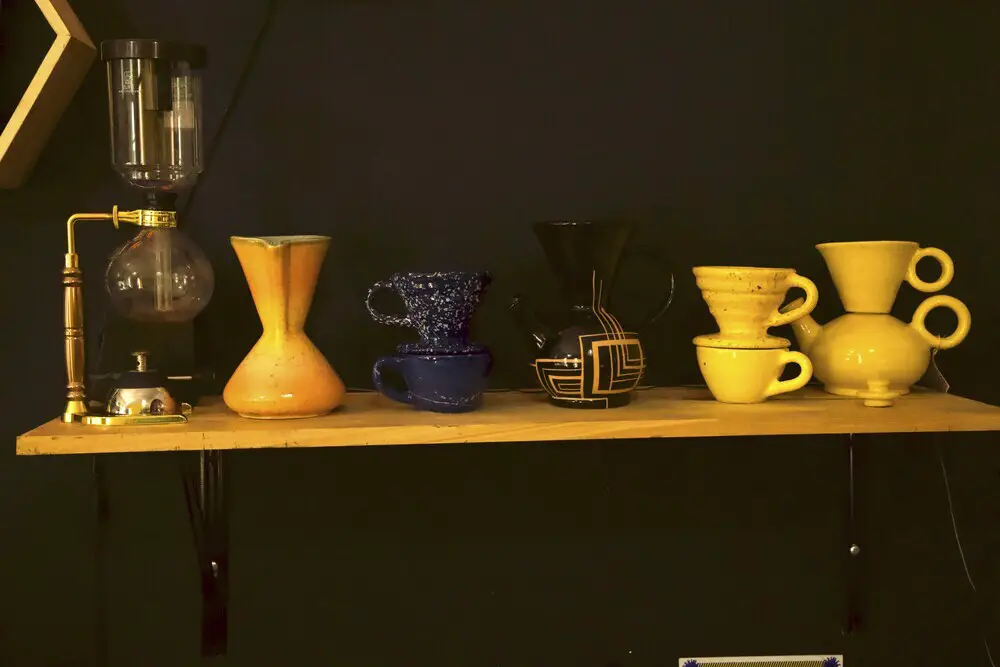The pressure setting of your coffee maker is one of the key elements for a good coffee.
Table of Contents
What is pressure in an espresso machine?
Pressure is the fundamental factor in making espresso as it determines the force with which the water is pushed through the coffee grounds.
Pressure has a specific measurement called “bar”. However, the optimal pressure may vary depending on the machine type and manufacturer.
How do you set the pressure in an espresso machine?
All espresso machines are different, but many of them share the same general pressure settings.
The extraction pressure
Extraction pressure in a coffee maker refers to the pressure used to force hot water through the coffee grounds to brew the coffee. The extraction pressure plays an important role in extracting the aromas and flavors from the coffee powder.
In most coffee machines, the extraction pressure is generated by a pump that forces the water through the coffee under pressure. The optimal extraction pressure varies depending on the coffee brewing method. A higher pressure is usually required to prepare espresso, typically between 9 and 15 bar. This high pressure enables rapid extraction in a short time, resulting in a concentrated and intense espresso.
Other coffee brewing methods such as filter coffee tend to use a lower extraction pressure, usually in the 1 to 2 bar range. Lower pressure allows for slower extraction and smoother flavor development.
The extraction pressure is an important factor in the quality of the coffee brewed. Too low a pressure can result in an under-extracted cup where the coffee is thin and tasteless. On the other hand, too much pressure can result in an over-extracted cup, where the coffee is bitter and overly concentrated. Controlling and adjusting the extraction pressure makes it possible to customize the coffee according to individual preferences and obtain the best possible aroma.
Some machines allow the extraction pressure to be adjusted manually, while others adjust it automatically via a preset.
How do you set the extraction pressure?
To set the extraction pressure, you must first make sure that the machine is on and hot, and that the amount of coffee ground and its fineness are appropriate.
It is important that when setting the pressure, you have a manometer on hand to measure the current pressure and adjust it if necessary.
If the pressure is too low, gradually increase it to the right level, if it is too high, gradually decrease it.
The vapor pressure
In addition to the extraction pressure, the steam pressure in the espresso machine, with which the milk is heated directly in the machine, must also be considered when preparing milk drink recipes.
Most machines have a general steam pressure of around 1.2 bar.
How do you set the vapor pressure?
To set the steam pressure you should use a pressure gauge and thermometer, make sure the device is hot and that the steam nozzle is very clean and in good condition.
Then open the steam valve and adjust the pressure to the correct value. Use the thermometer to ensure that the temperature of the milk remains constant throughout the preparation.
Why is it important to set the pressure?
Well, it is important to know that adjusting the pressure correctly is essential for a good espresso, since too low a pressure can result in a watery coffee, while too high a pressure can result in a rather bitter extraction coffee.
The espresso machine pressure is too low
If the pressure in your espresso machine is set too low, the coffee may be extracted insufficiently, resulting in a weak and tasteless espresso. In other words, if the pressure is too low, the water will not reach all parts of the grounds and the coffee will taste plain and unpleasant.
Also, the crema at the top of the espresso can be thin and disappear in a few seconds. The crema is an essential part of a good espresso because it gives it the smooth, creamy texture that is characteristic of all espresso and ensures that the taste and aromas of the coffee remain locked in the drink.
Another possible effect of a low pressure setting on the espresso machine is that it may be necessary to adjust the coffee grind to compensate for the lack of pressure. This can negatively affect the taste of the coffee, as too fine a grind can lead to a bitter taste and too coarse a grind can make the espresso watery.
Too much pressure in the espresso machine
Too high a pressure will cause the water to flow through the ground coffee too quickly, resulting in over-extraction. This over-extraction or infusion of the coffee results in a bitter and unpleasant-tasting espresso as too many bitter and acidic compounds are extracted from the coffee.
Also, too much pressure can negatively affect the quality of the crema, making it too thick and dark, which can negatively impact the coffee experience.
Excessive pressure not only affects the taste of the coffee and the quality of the crema, but can also unnecessarily stress the machine, so that the components of the espresso machine can be damaged, which will lead to high replacement and maintenance costs in the future.
Useful tips for pressure adjustment
With these tips, you can improve your brewing technique and delight your senses with the perfect taste, aroma and texture in every cup.
Know your espresso machine
Every espresso machine is different. Therefore, it is important that you read the owner’s manual or manufacturer’s instructions to learn about your machine’s features and specifications.
This will help you determine the recommended pressure range and correct settings for a perfectly balanced espresso.
Set the extraction pressure
Most espresso machines are designed for an extraction pressure of around 9 bar. If your machine has a built-in pressure gauge, you should make sure the extraction pressure is within this range.
To do this, use a portafilter and measure the extraction time. If the espresso comes out too quickly, reduce the pressure; if it comes out too slowly, increase it.
Adjusting the vapor pressure
Vapor pressure is important to create a smooth, creamy foam in milk-based beverages. If the pressure is too high, the milk can heat up too quickly and burn, resulting in an unsightly froth with an unpleasant taste.
If the pressure is too low, the milk will take longer to heat up, which can affect the consistency of the froth.
In general, the ideal vapor pressure is 1 to 1.5 bar.
Adjust coffee grind level
The grind of the coffee is also a factor that can affect the pressure in the espresso machine. If the coffee is ground too fine, the pressure can increase and result in a bitter and tasteless espresso.
If the coffee is ground too coarsely, the pressure can drop and the espresso can be watery.
Be sure to adjust the grind to get the right consistency and pressure; this also results in a full-bodied espresso with full flavor.
Experiment with your machine
The correct pressure in an espresso machine can vary depending on the machine, the type of coffee and the freshness of the ground coffee.
Get to know your espresso machine, play with it, try a new recipe, a different pressure and try to discover new flavors every day.
Error setting the pressure on the espresso machine
Remember that the pressure setting is just one of many factors that affect the quality of the espresso. Therefore, it is important to pay attention to all the details, including the amount of coffee used, the water temperature, and the extraction time.
- Not reading the instructions: Every espresso machine is different and requires different procedures to adjust the pressure. Read the instructions that the manufacturer provides with good reason; this saves you from costly mistakes in the future.
- Don’t give the machine time to set its preferences: Once a setting is made, the espresso machine needs time for the changes to take effect. If you don’t wait long enough, you may end up with unnecessary settings that you’ll then have to redo.
- Sticking to the same settings: Some baristas experiment with pressure settings to find the sweet spot for their machine and get the best espresso possible. Not experimenting with different settings can result in an espresso that doesn’t stand out from the rest.
- Forgetting Temperature: Temperature can also affect the pressure in an espresso machine. It is important to make sure the machine is at the correct temperature before adjusting the pressure.
Conclusion
Learning how to adjust the extraction and steam pressure of an espresso machine takes time and practice, but you’ll end up with delicious, high-quality coffee.
Be sure to follow your espresso machine manufacturer’s recommendations and experiment with different settings until you find the perfect balance. Remember that the right pressure is just one of the factors that can affect coffee quality.



